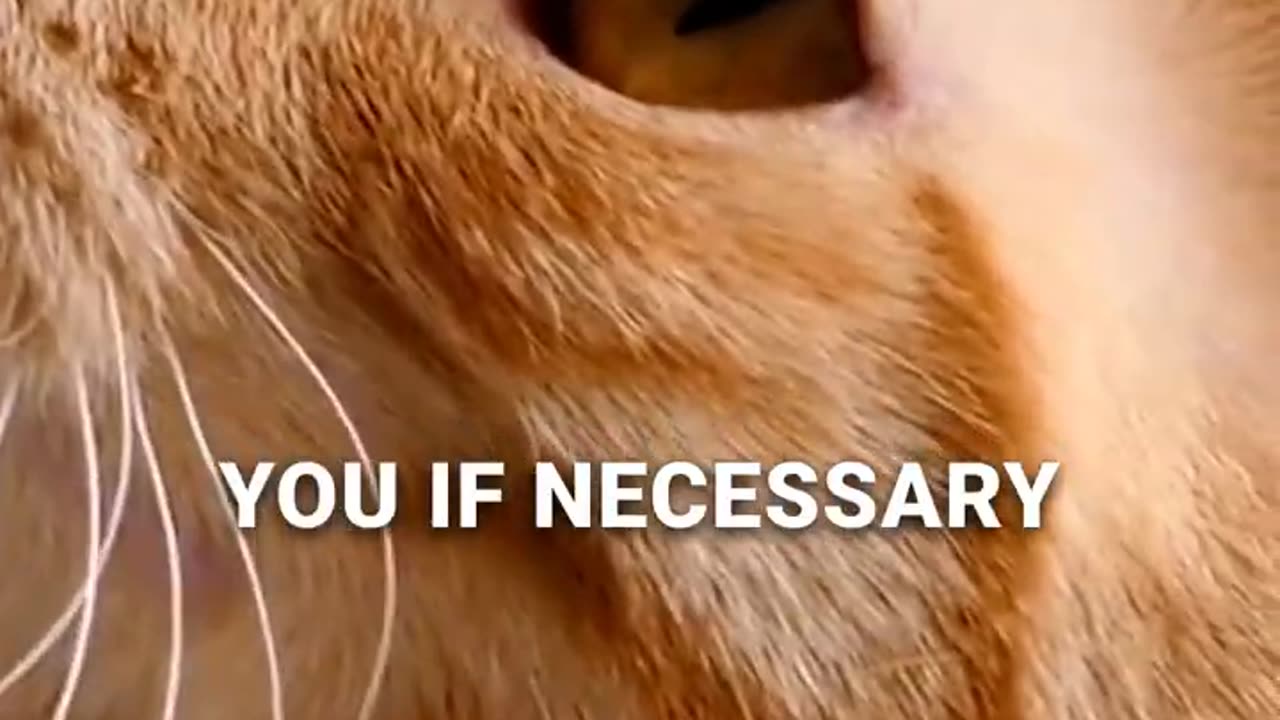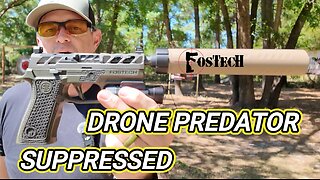Premium Only Content

Cat's Protective Behavior Signs part1
Certainly! Cats can display various signs of protective behavior to safeguard themselves, their territory, or their loved ones. Here are some common signs:
Hissing and Growling: When a cat feels threatened or senses danger, they may emit low-pitched hisses or growls to warn potential intruders to stay away. This behavior is often accompanied by bared teeth and a defensive posture.
Elevated Body Posture: A protective cat may puff up their fur to appear larger and more intimidating to perceived threats. Their tail may also be held upright or bushy, indicating readiness to defend themselves or their territory.
Blocking Access: Cats may position themselves between a perceived threat and their loved ones or territory, physically blocking access to the area they're protecting.
Staring Down Threats: Cats may engage in a prolonged stare-down with potential threats, maintaining eye contact as a way to assert dominance or intimidate intruders.
Aggressive Body Language: Protective cats may exhibit aggressive body language, such as flattened ears, dilated pupils, and a tense body posture. They may also arch their back and raise their hackles to appear more threatening.
Vocal Warnings: In addition to hissing and growling, cats may vocalize loudly to alert their humans to potential dangers or to intimidate intruders. These vocalizations can range from yowls and shrieks to loud, repetitive meows.
Defensive Attacks: If a protective cat feels cornered or threatened, they may resort to defensive attacks to ward off intruders. This can include swatting with their claws, biting, or lunging aggressively.
It's essential to respect a cat's boundaries and not escalate confrontations if they display protective behavior. Understanding their signals and providing a safe and secure environment can help alleviate their stress and prevent potential conflicts.
-
 8:22
8:22
Rethinking the Dollar
17 hours agoSilver vs CBDCs: The Battle for Financial Freedom
14.7K5 -
 55:15
55:15
MTNTOUGH Fitness Lab
17 hours agoTJ Dillashaw: Embracing Fear as a Privilege | MTNPOD #112
8.86K2 -
 12:24
12:24
T-SPLY
22 hours agoKamala’s COMEBACK FLOPS as Dems DITCH Her!
10.3K11 -
 47:42
47:42
Steph & Kayls
22 hours ago $0.40 earnedReflecting On How Being Spicy Creators Changed Our Relationship, Life And Bank Account | Ep. 2
7.83K4 -
 7:03
7:03
DropItLikeItsScott
23 hours ago $0.75 earnedFosTech Drone Predator Pistol Suppressed
12.8K -
 3:31:01
3:31:01
FreshandFit
11 hours agoAfter Hours w/ Dan Cates
116K154 -
 1:37:17
1:37:17
Badlands Media
11 hours agoBaseless Conspiracies Ep. 128: The Accelerationist Cults Grooming Kids into Terrorism with BX
154K47 -
 2:44:29
2:44:29
TimcastIRL
13 hours agoBail DENIED For Leftist Who FIREBOMED Democrat Governor's Mansion, Mangione Effect | Timcast IRL
282K123 -
 24:05
24:05
Glenn Greenwald
17 hours agoAs U.S. Censorship Escalates, New Poll Reveals Declining Support for Israel: UNLOCKED Episode
210K159 -
 2:14:50
2:14:50
We Like Shooting
1 day ago $11.50 earnedWe Like Shooting 606 (Gun Podcast)
71.3K6